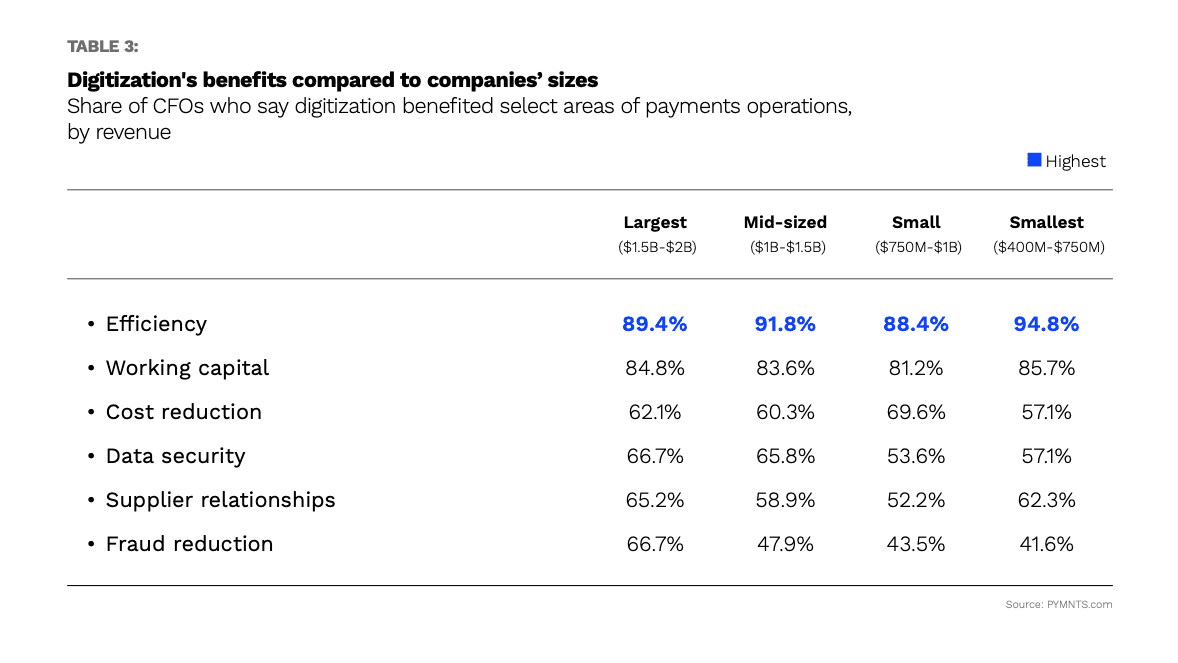
Chief financial officers perceive accounts receivable (AR) and accounts payable (AP) as the factor most important to creating a healthy balance sheet, according to Business Payments Digitization, a PYMNTS and Corcentric collaboration based on a survey of 400 CFOs who represent companies that earn between $400 million and $2 billion in annual revenues.
Get the report: Business Payments Digitization: Large Companies Set The Pace
Ninety-nine percent of the CFOs from the largest companies included in the study said AR/AP is “very” or “extremely” important in creating healthy balance sheets, as did 96% of those from mid-sized firms, 93% of those from small firms and 94% of those from the smallest firms included in the survey.
Running close behind and ranked as the second most important factor is asset investments. Ninety-three percent of CFOs from the largest companies said that was “very” or “extremely” important, as did 87% of those from mid-sized firms, 88% of those from small firms and 93% of those from the smallest firms surveyed.

Fifty-nine percent of the CFOs responding to the survey are focusing on payments digitization. The larger their firm, the more likely the CFOs were to say that digitization is a “very” or “extremely” important strategy to improving balance sheets.
That was the opinion of 74% of the CFOs from the largest firms, 59% of those from mid-sized firms, 54% of those from small firms and 50% of those from the smallest firms included in the survey.
CFOs are focusing on payments digitization for different reasons. Overall, the CFOs said they believe digitization is about transformation. There were differences among the CFOs of companies of different sizes, however.
The larger the company they represent, the more likely CFOs are to see their digitization plans as an opportunity to transform their payments processes. CFOs from smaller companies are more likely to consider digitization to be something smaller — a means toward automating existing manual processes or eliminating some entirely to streamline operations.
